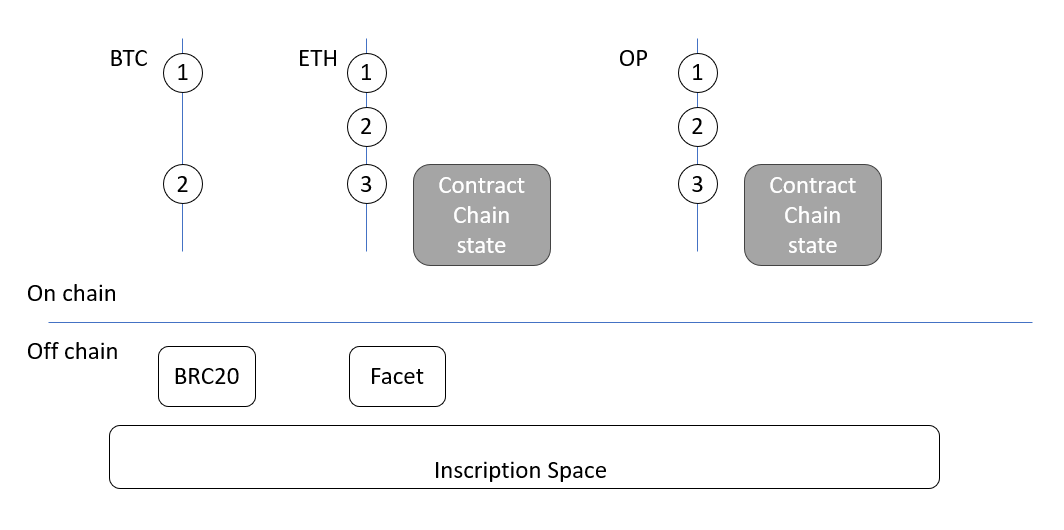In the previous article Inscription Instrumentality Project, we started to think about Inscription contracts. Of course, in our learning process, Facet Protocol gave us a lot of inspiration, which gave us the opportunity to summarize the core of blockchain design "subtraction". From Bitcoin to Ethereum, it is "addition" to the blockchain, but the direction that truly makes the blockchain obtain almost unlimited scalability should be "subtraction", and the consensus on the chain can only include order and election, and not to execute or verify transactions.

The concept of Inscription Space soon appeared in our minds. It is in contrast to the on-chain state space of smart contracts. Since Inscription contracts are theoretically feasible, for a brand-new blockchain, we can completely not design smart contract functions, use Inscription contracts, establish Inscription state spaces off the chain, and store assets. For an existing blockchain with smart contracts, the assets of smart contracts can also be transferred to the Inscription space like a cross-chain bridge.

Soon, we realized that Inscription Space do not have to be limited under the same chain. We saw that BRC20 and Facet protocols are only for Inscription Space off a single chain, for transfers and the implementation of smart contracts. If we do not modify BRC20 or Facet protocols, we can also create a brand new protocol that spans multiple blockchains and Inscription spaces.
Previously, cross-chain bridges were a major security risk. With this design, as long as assets are transferred from the chain to the Inscription Space, the "most dangerous" step has been completed. After that, users can transfer assets between Inscription spaces on different chains with almost the same convenience as a transaction. Assets are still controlled by transactions on the corresponding chain, but users can also declare to give up control of some assets and transfer them to other chains’ Inscription space.

Such a design is a breakthrough for blockchain infrastructure. It is easy to achieve the interoperability of assets on different chains in a unified space. For example, if a user has a large asset, it can be stored on BTC or ETH, but the cost of operation is relatively expensive. It is cheaper on L2, so it can be operated more frequently. This is due to the fact that the Inscription system uses a subset of features that are commonly owned by most blockchains, because all blockchains almost have the function of sequencing transactions. Different chains can access Inscription contract applications with a more unified message format.
Inscription contracts also have the opportunity to standardize contract interfaces, rather than each chain having its own smart contract standard. In fact, blockchains should focus more on their core business, such as processing speed, sharding capabilities, and especially decentralization.
The Inscription spaces of different protocols can support different virtual machines and programming languages, and even the designs of the protocols can be very different. Perhaps they will also have interoperability between them, allowing assets to flow between protocols. Another possibility is that some protocols focus on a type of asset, such as stablecoins or NFTs, and the professionalism will make users choose specific protocols. We look forward to such progress in blockchain technology, which can make blockchains more concise, and also allow us to implement more complex logic in the Inscription space, and even have the opportunity to build complex applications that are not financial.